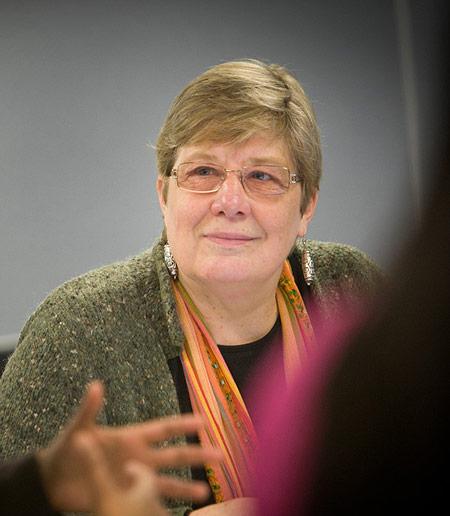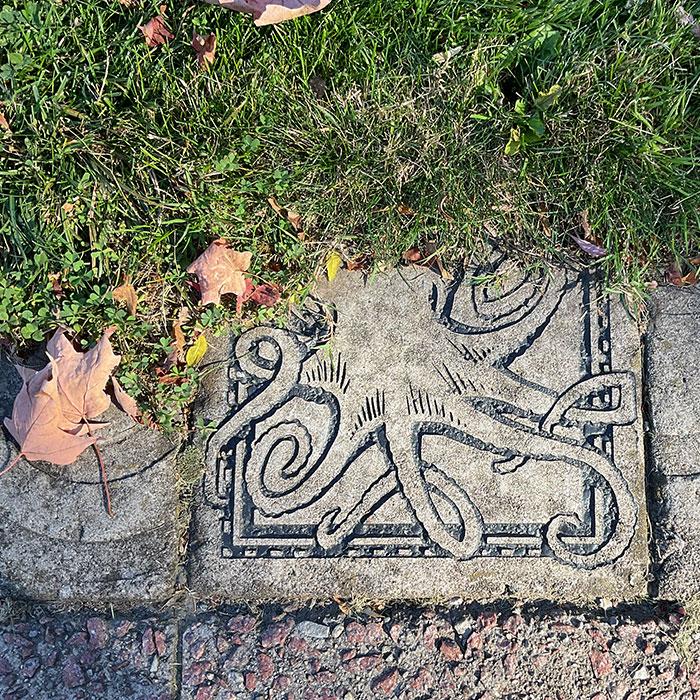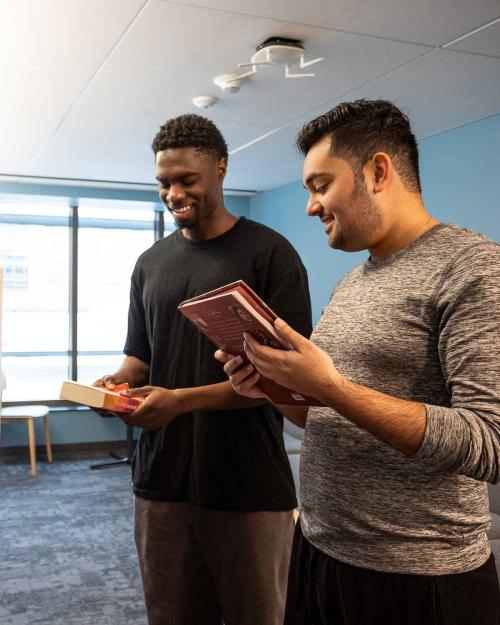Students who want an immersive on-campus experience with American Sign Language (ASL) can now sign up to live in the Language House for the 2025-26 academic year.
The house, located within Toni Morrison Hall on North Campus, includes 44 students who are interested in language study. Next year, the house will include students speaking French, Spanish, Mandarin, Korean and now ASL.
“Having ASL at the Language House will solidify a signing community on campus, in addition to having more of an immersive experience with the language with a fluent ASL model,“ said Brenda Schertz, senior lecturer of ASL in the Department of Linguistics, in the College of Arts and Sciences (A&S). “Students in the ASL section of Language House will have social and cultural opportunities, too, including organized events on campus and trips to Rochester, which has one of the largest Deaf communities per capita in the U.S.”
The Language House was founded in 1984, with German, French and Spanish as the original three sections. It was housed in various campus residential buildings before moving to Morrison Hall in 2023. Each year, Housing and Residential Life surveys students who live on campus to gauge interest and determine if languages should be added or discontinued. Over the years, Arabic, Farsi, Japanese, Italian and Russian have all been part of the house.
Students in the house are encouraged to speak in their target language while in the house. Each group of students has a corresponding residential language fellow, who is a fluent or native speaker of the language.
“Students are in various levels of proficiency with their language,” said Monti Wilkins, residence hall director for Morrison Hall. “Some have years of experience and others have been doing (free language-learning app) Duolingo and are just now taking classes to enhance their skills.”
Justin Eburuoh ’27, an information science major (A&S), said living in the Language House has helped him gain confidence in speaking Spanish.
“During our ‘Horchata y Galletas’ event, I chatted with my residential language fellow and suitemate fully in Spanish for about half an hour,” he said. Horchata is a drink made from nuts or rice that looks like milk; galletas are cookies.
“I felt really comfortable throughout the conversation, and it was especially refreshing not having to feel the pressure of being graded for my fluency like in the Spanish classes I’ve taken at Cornell,” he said. “Living here has deepened my appreciation for the ethnic and cultural diversity that Cornell has to offer.”
Students are also connected to faculty and staff, who plan programs and activities to increase their linguistic skills and their cultural competence. For example, a Matchae Hwachae event on March 15 invited the campus to celebrate and learn more about the traditional Korean drink, Wilkins said.
“ASL is a rich and dynamic language, and this expansion provides students with an incredible opportunity to engage more deeply with both the language and Deaf culture,” said Angelika Kraemer, director of the Language Resource Center. “The addition of ASL to the Language House not only strengthens Cornell’s growing ASL program, but also fosters greater awareness and visibility of Deaf culture across campus.”
For more information, visit the Language House website or read this Language House program spotlight article.





